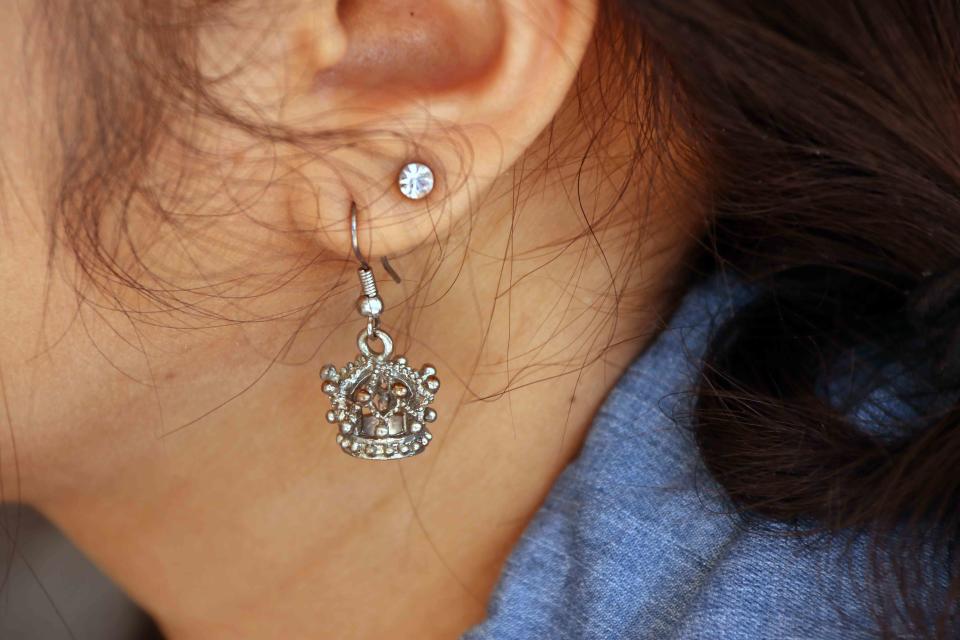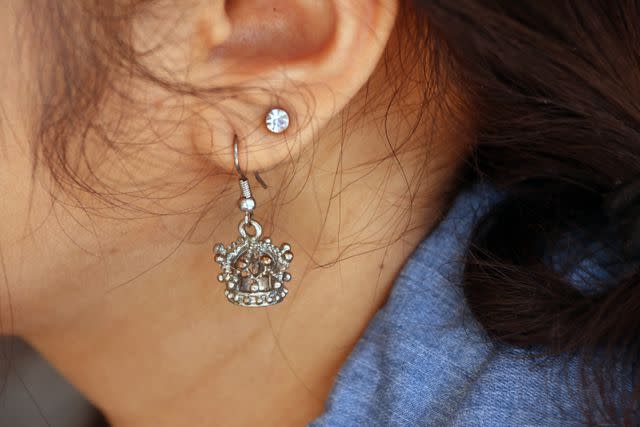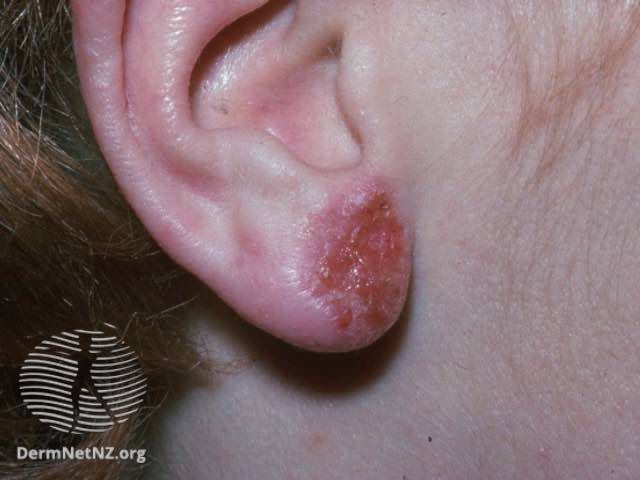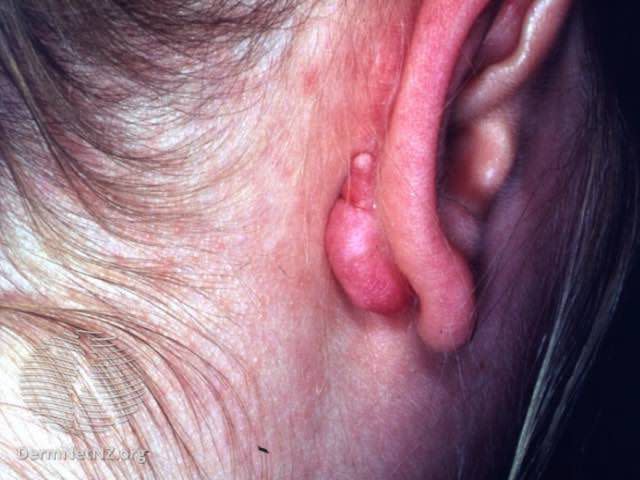What to Expect When Getting Your Ears Pierced
Ask yourself these questions before making an appointment

Achisatha Khamsuwan/Getty Images
Medically reviewed by Michael Menna, DO
Getting your ears pierced is a form of self-expression that can be done by medical and non-medical professionals. Earlobe piercings are the most common, but other parts of the ear (including areas with cartilage) can also be pierced.
Body piercings in the nose, belly button, and other areas are also popular. Regardless of location, a new piercing needs to be done by someone who knows how to do it safely, and you need to take care of it while it heals.
This article looks at how ear piercings are done, where to get your ears pierced, how to care for a new piercing, possible complications, things to consider before getting a piercing, and why getting your ears pierced should not be a DIY project.

How Are Ears Pierced?
Piercing techniques vary depending on where you get it done. You might get a local anesthetic or ice to numb the spot before the needle goes into your ear. If you're worried that getting your ears pierced will hurt, ask the piercers you're considering about how they handle pain.
One-Needle Technique
To use the one-needle technique, a piercer:
Inserts a hollow bore needle through the desired spot for the earring.
Next, they insert the post of an earring through the hollow bore of the needle.
Finally, they remove the needle, leave the stud post in place, and put the earring back on.
Two-Needle Technique
To use the two-needle technique, a piercer:
Will use a smaller needle to make a hole in the desired area.
Next, they slip a larger, hollow needle over it in the opposite direction.
Then, the smaller needle is removed, and the earring stud post is inserted through the hollow bore of the remaining larger needle.
Last, the needle is then withdrawn, leaving the stud post in place. The piercer secures it with an earring back.
Ear Piercing Kits
Many jewelry stores and ear-piercing professionals use commercial ear-piercing kits with piercing "guns." Ear-piercing guns hold a stud earring on one side and the earring back on the other. The process is simple:
First, the piercer puts your earlobe (or another spot to be pierced) between the two sides of the gun.
Then, they pull the “trigger” button on the gun.
Next, the gun “shoots" the earring directly through your skin and into the earring's back.
Note that many professional piercers argue that piercing guns are unsafe because they can't be fully sterilized and can cause excess tissue damage. The Association of Professional Piercers, a nonprofit that promotes safe piercing practices, doesn't allow its members to use piercing guns.
Where to Get Your Ears Pierced
Common locations where you can get your ears pierced include:
Piercing and tattoo studios
Dermatology offices
Jewelry and accessories stores
Beauty retailers and stores like Claire’s and Alta
Shopping mall kiosks
These locations may follow safe practices, but any piercing, no matter who does it, carries risks.
If you have health problems that would make it riskier to get your ears pierced, (e.g., keloids, metal allergies, immune-system problems), you may want to have it done by a dermatologist or reputable piercing professional.
Caring for Newly Pierced Ears
Make sure to follow the instructions given to you by the person who did your piercing.
Starter earrings need to be left in for several weeks for your piercing to heal without closing up the hole. The exact time you’ll need to wait before taking them out varies depending on what part of the ear is pierced.
You'll also need to clean the piercing with a sterile saline solution and rotate the earring to keep it from getting stuck.
Complications of Pierced Ears
A new piercing can have complications, even if you take care of it. Possible complications of pierced ears include:
Infection
Allergic reactions
Splitting earlobe(s)
Infection in Newly Pierced Ears
Your choice of piercer plus doing proper care at home can minimize your risk of infection. Symptoms of an infected piercing include:
Pain
Swelling
Warmth
Discoloration (pink or red on light skin, darker patches on dark skin)
Crusting around the hole
Your piercing will cause some pain and inflammation, but it should be minimal if you go to a qualified piercer.
Seek Immediate Medical Care If:
The piercing looks infected and you have a fever
Discoloration on your ear is spreading
An upper ear piercing is red and swollen
Related: Infected Ear Piercing: Causes, Symptoms, and Treatment
Allergic Reactions in Newly Pierced Ears

DermNet / CC BY-NC-ND
Contact dermatitis on ear lobeIf you have a known metal allergy, get starter earrings that do not have that metal in them. The following materials are generally safe choices for people with metal allergies:
Titanium
Platinum
Niobium
Gold that is 14K or higher and nickel-free
Certain grades of surgical steel, known as ASTM F-138, ISO 5832-1, and ISO 10993-(6,10, or 11) compliant
Metals that are considered unsafe for initial piercings include stainless steel, sterling silver, and any alloys containing nickel.
Some people only find out they have or develop a metal allergy after piercing their ears.
A metal allergy is a form of contact dermatitis that can cause symptoms similar to an infection like:
Discoloration
Itchiness
Burning sensations
Flaky, dry, crusty, or blistered skin
With ongoing contact, a rash on parts of the body that aren't directly exposed
However, an antibiotic ointment won't clear up if your symptoms are from an allergy. If you get multiple piercings at once (such as in both ears), you're likely to develop an allergy in all the pierced places.
If you learn you have an allergy after piercing your ears, take out the earring and see a healthcare provider for diagnosis and treatment. A dermatologist can do a skin patch test to see if you have a metal allergy.
The most common metal allergies are nickel and cobalt. If you have an allergy, you'll need to use jewelry and personal-care products that do not contain the metal you’re allergic to (such as nickel-free earrings and razors).
Is a Metal Allergy Life-Threatening?
A metal allergy affects the skin and typically causes a rash (contact dermatitis). It does not cause anaphylaxis (a life-threatening complication of some allergies).
Learn More: Dealing With Piercing Allergies
Splitting Earlobe
A piercing that's too low on the earlobe(s) may split out the tissue beneath the hole, which lead to scarring. Sometimes, this happens because the earlobes are not symmetrical, so one piercing is too low to be even with the other.
If your earlobes are very asymmetrical, tell your piercer. They may need to take extra care to make sure your earrings are level with each other.
Keloids (Large Scars)
Keloids are large scars that spill over the border of the area of trauma, often forming lumps.
If you have a personal or family history of keloids, your risk of developing a large scar after getting your ears pierced is higher.
Consider whether that kind of scar on your ear would bother you before you get a piercing. You may want to talk to your healthcare provider about it beforehand.

DermNet / CC BY-NC-ND
Ear piercing keloidShould You Pierce Your Ears at Home?
While it might be tempting to do your piercing at home, it’s best left to a professional. It’s not safe to pierce your ears yourself or have a friend or family member do it for you at home.
You can buy sterile needles, starter earrings, and ear-piercing kits, but without proper training and procedures to reduce risks, a DIY piercing increases your risk of complications like infection and splitting lobes.
Summary
Ears can be pierced using different techniques, including a gun or needles. It's important to keep your piercing clean and rotate the earrings regularly while they are healing.
Possible complications of ear piercings are infection, allergic reactions to metal, a splitting earlobe, or keloid scars. Keloids are more likely if you have a personal or family history of them.
Most professional piercing locations are safe but all piercings come with risks. If you think you could have complications from a piercing, you may want to have it done by a dermatologist. Never try to pierce your own ears at home or have a family member or friend do it for you.

